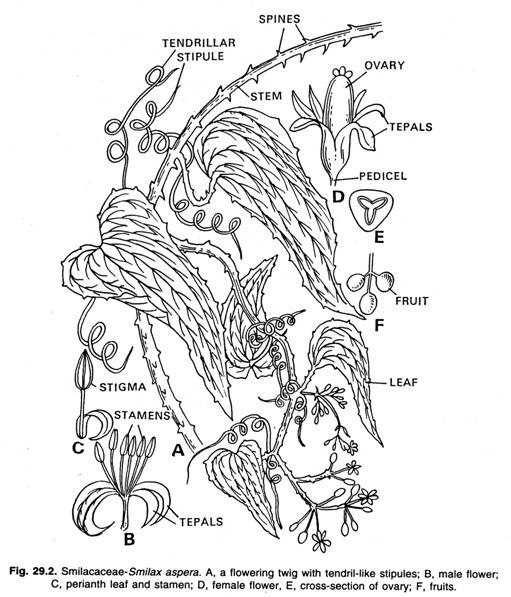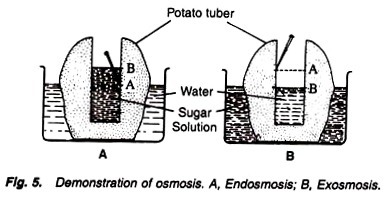ADVERTISEMENTS:
Read this article to learn about the initial velocity measurement of a chemical reaction by direct, indirect and coupled assays.
To measure the velocity of a reaction, it is necessary to follow a signal that reports product formation or substrate depletion over time.
The type of signal that is followed varies from assay to assay but usually relies on some unique physicochemical property of the substrate or product, and/or the analyst’s ability to separate the substrate from the product.
ADVERTISEMENTS:
Generally, most enzyme assays rely on one or more of the following broad classes of detection and separation methods to follow the course of the reaction:
Spectroscopy,
Polarography,
Radioactive decay,
ADVERTISEMENTS:
Electrophoretic separation,
Chromatographic separation and
Immunological reactivity.
Direct Assay:
These methods can be used in direct assay, the direct measurement of the substrate or product concentration as a function of time. For example, the enzyme cytochrome c oxidase catalyzes the oxidation of the heme-containing protein cytochrome c. In its reduced (ferrous iron) form, cytochrome c displays a strong absorption band at 550 nm, which is significantly diminished in intensity when the heme iron is oxidized (ferric form) by the oxidase.
One can thus measure the change in light absorption at 550 nm for a solution of ferrous cytochrome c as a function of time after addition of cytochrome c oxidase; the diminution of absorption at 550 nm that is observed is a direct measure of the loss of substrate (ferrous cytochrome c) concentration (Fig. 7.1).
In some cases the substrate and product of an enzymatic reaction do not provide a distinct signal for convenient measurement of their concentrations. Often, however, product generation can be coupled to another, non-enzymatic, reaction that does produce a convenient signal; such a strategy is referred to as an indirect assay.
Indirect Assays:
Dihydroorotate dehydrogenase (DHODase) provides an example of the use of indirect assays. This enzyme catalyzes the conversion of dihydroorotate to orotic acid in the presence of the exogenous cofactor ubiquinone. During enzyme turnover, electrons generated by the conversion of dihydroorotate to orotic acid are transferred by die enzyme to a ubiquinone cofactor to form ubiquinol.
It is difficult to measure this reaction directly, but the reduction of ubiquinone can be coupled to other non-enzymatic redox reactions. Several redox-active dyes are known to change colour upon oxidation or reduction. Among these, 2, 6- dichlorophenolindophenol (DCIP) is a convenient dye with which to follow the DHODase reaction. In its oxidized form DCIPs bright blue, absorbing light strongly at 610 nm.
ADVERTISEMENTS:
Upon reduction, however, this absorption band is completely lost. DCIP is reduced stoichiometrically by ubiquinol, which is formed during DHODase turnover. Hence, it is possible to measure enzymatic turnover by having an excess of DCIP present in a solution of substrate (dihydroorotate) and cofactor (ubiquinone), then following the loss of 610 nm absorption with time after addition of enzyme to initiate the reaction.
A third way of following the course of an enzyme-catalyzed reaction is referred to as the coupled assays method. Here the enzymatic reaction of interest is paired with a second enzymatic reaction, which can be conveniently measured. In a typical coupled assay, the product of the enzyme reaction of interest is the substrate for the enzyme reaction to which it is coupled for convenient measurement.
An example of this strategy is the measurement of activity for hexokinase, the enzyme that catalyzes the formation of glucose 6-phosphate and ADP from glucose and ATP. None of these products or substrates provides a particularly convenient means of measuring enzymatic activity.
However, the product glucose 6-phosphate is the substrate for the enzyme glucose 6-phosphate dehydrogenase, which, in the presence of NADP, converts this molecule to 6-phosphogluconolactone. In the course of the second enzymatic reaction, NADP is reduced to NADPH, and this cofactor reduction can be monitored easily by light absorption at 340 nm.
ADVERTISEMENTS:
This example can be generalized to the following scheme:
where A is the substrate for the reaction of interest, v1 is the velocity for this reaction, B is the product of the reaction of interest and also the substrate for the coupling reaction, v2 is the velocity for the coupling reaction, and C is the product of the coupling reaction being measured. Although we are measuring C in this scheme, it is the steady state velocity v1 that we wish to study.
To accomplish this we must achieve a situation in which v1 is rate limiting (i.e., v1 ˃˃ v2) and B has reached a steady state concentration. Under these conditions B is converted to C almost instantaneously, and the rate of C production is a reflection of v1. The measured rate will be less than the steady state rate v1, however, until [B] builds up to its steady state level.
ADVERTISEMENTS:
Hence, in any coupled assay there will be a lag phase prior to steady state production of C (Fig. 7.2), which can interfere with the measurement of the initial velocity. Thus to measure the true initial velocity of the reaction of interest, conditions must be sought to minimize the lag phase that precedes steady state product formation, and care must be taken to ensure that the velocity is measured during the steady state phase.
The velocity of the coupled reaction, v2, follows simple Michaelis-Menten kinetics as follows:
v2 = V2[B] / K2m[B],
ADVERTISEMENTS:
where K2m refers to the Michaelis constant for enzyme E2, not the square of the Km. Early in the reaction, v1 is constant for a fixed concentration of E1. Hence, the rate of B formation is given by:
d[B] /dt = v1 – v2 = v1 – V2[B] / k2m + [B],
This equation was evaluated by integration by Storer and Cornish-Bowden (1974), who showed that the time required for [B] to reach some percentage of its steady state level [B]ss can be defined by the following equation:
t99% = φK2m/v1,
where t99% is the time required for [B] to reach 99% [B]ss and Ф is a dimensionless value that depends on the ratio v1/V2 and v2/v1. It is known that maximal velocity V2 is the product of kcat for the coupling enzyme and the concentration of coupling enzyme [E2]. The values of kcat and Km for the coupling enzyme are constants that cannot be experimentally adjusted without changes in reaction conditions.
The maximal velocity V2, however, can be controlled by the researcher by adjusting the concentration [E2]. Thus by varying [E2] one can adjust V2, hence the ratio v1/V2, and also the lag time for the coupled reaction.
Let us say that we can measure the true steady state velocity v1 after [B] has reached 99% of [B]ss. How much time is required to achieve this level of [B]ss? We can calculate this if we know the values of v1 and Ф. Storer and Cornish-Bowden tabulated the ratios v1/V2 that yield different values of Ф for reaching different percentages of [B]ss. Table 7.1 lists the values for [B]=99% [B]ss.
This percentage is usually considered to be optimal for measuring v1 in a coupled assay. In certain cases this requirement can be relaxed. For example, [B] = 90% [B]ss would be adequate for use of a coupled assay to screen column fractions for the presence of the enzyme of interest.
In this situation we are not attempting to define kinetic parameters, but merely wish a relative measure of primary enzyme concentration among different samples. The reader should consult the original paper by Storer and Cornish-Bowden (1974) for additional tables of Ф for different percentages of [B]ss.
Easterby (1973) and Cleland (1979) have presented a slightly different method for determining the duration of the lag phase for a coupled reaction. From their treatments we find that as long as the coupling enzyme(s) operate under first-order conditions (i.e., [B]ss << K2m), we can write:
[B]ss=v1 (K2m/V2).
And
ADVERTISEMENTS:
τ = K2m/V2,
where τ is the lag time. The time required for [B] to approach [B]ss is exponentially related to τ so that [B] is 92% [B]ss at 2.5τ, 95% [B]ss at 3τ, and 99% [B]ss at 4.6τ (Easterby, 1973). Product (C) formation as a function of time (t) is dependent on the initial velocity and the lag time (τ) as follows:
[c] = v1 (t + τe-t/τ – τ)
If more than one enzyme is used in the coupling steps, the overall lag time can be calculated as ∑(Kim/Vi). For example, if one uses two consecutive coupling enzymes, A and B to follow the reaction of the primary enzyme of interest, the overall lag time would be given by:
τ = KAm/VA + Knm/VB.
Because coupled reactions entail multiple enzymes, these assays present a number of potential problems that are not encountered with direct or indirect assays. For example, to obtain meaningful data on the enzyme of interest in coupled assays, it is imperative that the reaction of interest remains rate limiting under all reaction conditions.
Otherwise, any velocity changes that accompany changes in reaction conditions may not accurately reflect effects on the target enzyme. For example, to use a coupled reaction scheme to determine kcat and Km for the primary enzyme of interest, it is necessary to ensure that v1 is still rate limiting at the highest values of [A] (i.e., substrate for the primary enzyme of interest).
Coupled Assay:
Use of a coupled assay to study inhibition of the primary enzyme might also seem problematic. The presence of multiple enzymes could introduce ambiguities in interpreting the results of such experiments: for example, which enzyme(s) are really being inhibited? Easterby (1973) points out, however, that using coupled assays to screen for inhibitors makes it relatively easy to distinguish between inhibitors of the primary enzyme and the coupling enzyme(s).
Inhibitors of the primary enzyme would have the effect of diminishing the steady state velocity v1 (Fig. 7.3A), while inhibitors of the coupling enzyme(s) would extend the lag phase without affecting v1 (Fig. 7.3B). In practice these distinctions are clear-cut only when one measures product formation over a range of time points covering significant portions of both the lag phase and the steady state phase of the progress curves (Fig. 7.3). Rudolph et al. (1979), Cleland (1979), and Tipton (1992) provide more detailed discussions of coupled enzyme assays.




